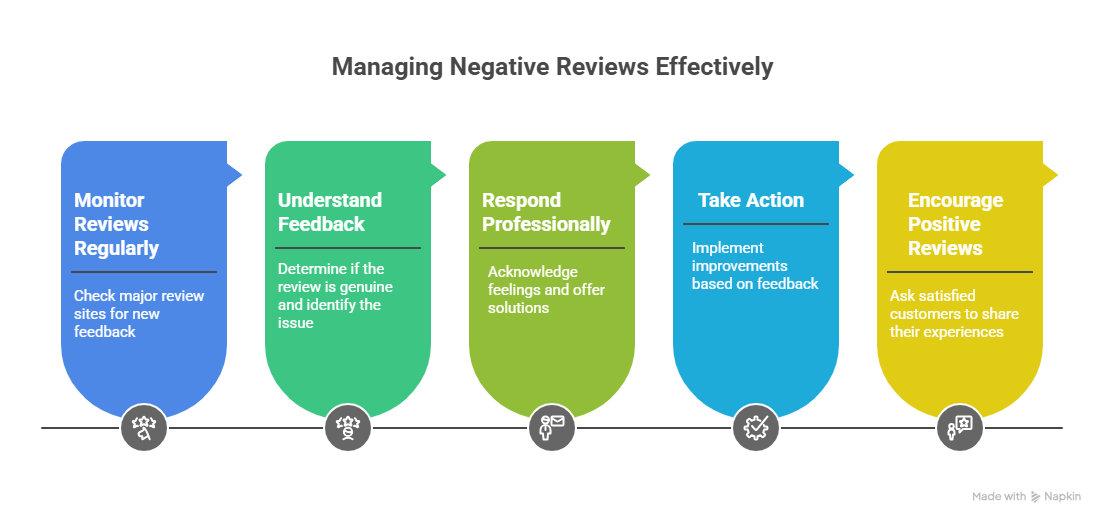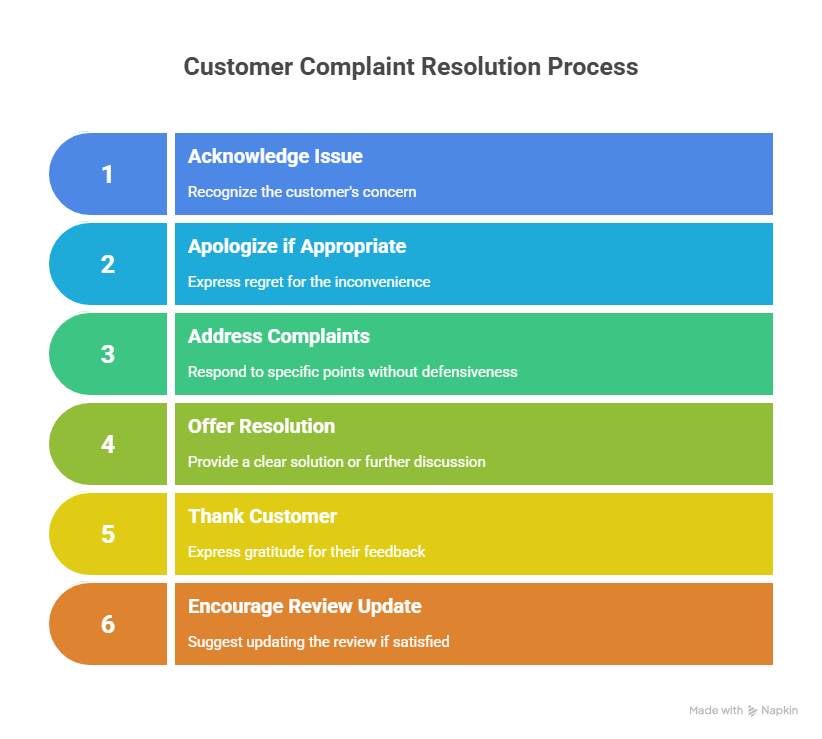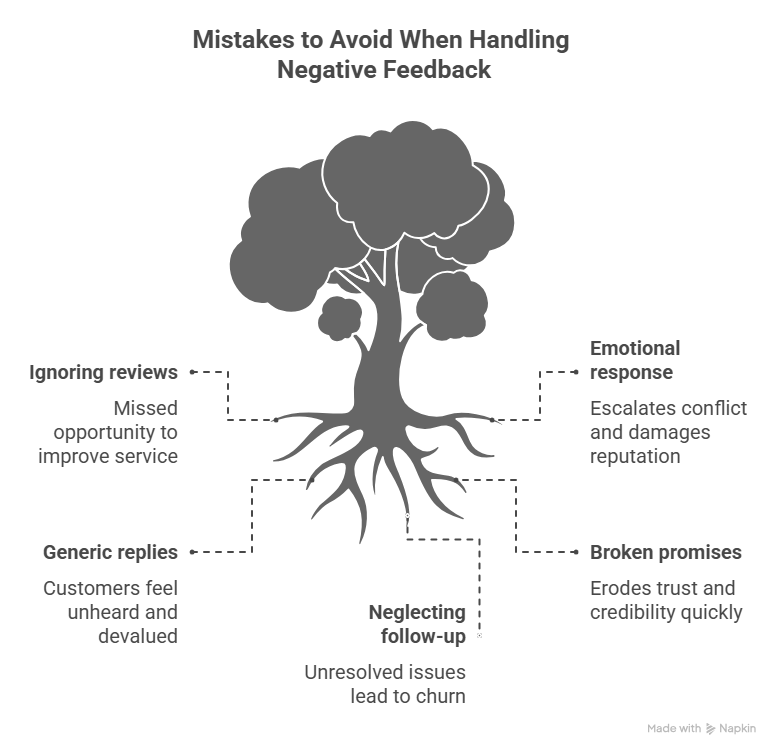
How to Handle Negative Reviews: A Practical Guide to Protect Your Business Reputation
Receiving a negative review often feels like a blow to your business’s credibility, especially when it shows up front and center on platforms like Google, Yelp, or Facebook. But here’s the truth: negative reviews aren’t just bad feedback to ignore or delete, they’re one of the most valuable opportunities your business can get. When handled well, a bad review offers a chance to make things right, boost your online reputation, and show potential customers that you care deeply about their experience.
In this guide, I’ll walk you through how to handle negative reviews effectively. You’ll learn why taking the time to respond to both positive and negative reviews is crucial, the right way to craft your replies, and how to convert unhappy customers into loyal advocates. Whether you’re facing an occasional negative online review or a string of negative feedback, this article will help you protect and even improve your business reputation by responding thoughtfully and strategically.
The True Impact of Negative Reviews on Your Business
It’s easy to assume that a negative review only hurts your business, but the impact is far more nuanced and important than you might think. How you respond to negative reviews can strongly influence your online reputation and affect how future customers perceive your brand.
When customers research your business on review sites like Google, Yelp, Tripadvisor, or Facebook, they often read not just the positive and negative reviews but also how businesses respond to them. A well-crafted review response to a bad review can show that you value customer feedback, care about their experience, and are committed to making things right.
Keep in mind that customers expect businesses to reply to every negative comment in a timely, respectful, and helpful way. Failing to respond within a reasonable time or ignoring negative feedback can lead potential customers to doubt your credibility and question your customer service. On the other hand, a thoughtful reply can turn a negative experience into a demonstration of your dedication, strengthening your reputation.
Moreover, negative reviews aren’t just customer complaints; they can be important insights into areas where your product or service may need improvement. By using negative reviews to improve, you not only address individual complaints but also enhance your overall business offering, leading to fewer negative comments over time and more positive reviews.
Finally, negative online reviews can influence your rankings on Google and other search engines. Google’s algorithms consider review quantity, recency, and overall ratings, but also the presence of active, genuine engagement with reviews. That means your review response plays a crucial role in SEO, helping your business stand out in local search results and bringing more customers to your door.
Why You Must Actively Respond to Negative Feedback
Ignoring a negative review or hoping it will just disappear among positive reviews is a mistake many businesses make. But responding to negative feedback is essential to strengthening your online reputation and showing potential customers that you genuinely care about their experience.
Thoughtful responses build trust, show you value customer feedback, and offer a chance to make things right. This approach can turn a negative experience into a positive impression that resonates not only with the unhappy customer but with everyone who reads the review. Additionally, search engines favor businesses that actively engage with reviews, which can boost your visibility in local search results.
Why You Should Respond Quickly:
- Customers typically expect a response within 24-48 hours
- Prompt replies show you take concerns seriously and prevent issues from escalating
- Timely review responses reflect well on your customer service and business credibility
When crafting your response, keep these tips in mind:
- Start by acknowledging the issue and apologizing if appropriate
- Address specific complaints without getting defensive
- Offer a clear way to resolve the problem or invite the customer to continue the conversation offline
- Thank the customer for their feedback and encourage them to update their review if satisfied
It’s a good idea to have a process in place, like the one below, so everyone on your team knows exactly what steps to take and when.
Also, don’t overlook the importance of responding to positive reviews. A simple thank-you reinforces good relationships and encourages more good reviews in the future.
By taking the time to reply thoughtfully to both positive and negative reviews, you demonstrate your commitment to customer satisfaction and improve your business’s overall reputation.
Practical Step-by-Step Process: How to Handle Negative Reviews
Effectively handling negative reviews starts with a clear, consistent approach that helps you respond thoughtfully and improve your business reputation.
The first step is to monitor your reviews regularly across all major review sites such as Google, Yelp, Tripadvisor, and Facebook. Using reputation monitoring tools can help alert you quickly when a negative review is posted, so you can respond promptly and prevent issues from escalating. It’s important to track multiple platforms since customers often leave reviews in various places.
Next, take time to understand the feedback. Is the negative review from a genuine dissatisfied customer or perhaps a fake review? Determining whether the issue relates to your product or service, a particular experience, or something else helps you tailor your response and identify areas to improve.
When you respond to negative reviews, aim to acknowledge the customer’s feelings and offer a sincere apology if appropriate. A good response addresses their concerns directly and offers a clear way to make things right—whether that’s through a refund, replacement, or further communication offline. Keep your tone professional, empathetic, and focused on customer care. This kind of response can turn a negative experience into a positive impression and demonstrate to potential customers that you value all feedback.
Finally, don’t just respond—take action. Use negative feedback to improve your processes, and encourage customers who have had their issues resolved to leave positive reviews reflecting their renewed satisfaction. This approach not only builds trust but helps balance your profile with both positive and negative reviews, strengthening your online reputation long-term.
Key steps to handle negative reviews effectively:
- Monitor reviews consistently on all platforms
- Understand the nature of the feedback before replying
- Craft empathetic, solution-oriented responses
- Use feedback to make meaningful improvements
Handling Different Types of Bad Reviews & Complaints
Not all negative reviews are created equal. Knowing how to tailor your response based on the type of complaint helps maintain professionalism and protects your reputation.
First, some negative reviews focus on your product or service quality, delivery issues, or pricing concerns. These often stem from genuine dissatisfaction and require thoughtful, specific explanations and offers to make things right. For example, if a customer experienced a delayed delivery, acknowledging the issue and explaining what steps you’re taking to improve shipping times shows you value their experience.
Other negative feedback may be more emotional or vague, sometimes bordering on a rant. While it’s important to remain calm and professional, your response should still validate the customer’s feelings and gently guide the conversation toward resolving the issue.
Then there are fake reviews—those posted maliciously or without basis. Many review sites, like Google and Yelp, have processes for reporting and removing these. It’s essential to document such cases and follow platform policies carefully rather than engaging directly in public disputes.
Finally, understand that each platform has its own nuances. For example, Google Business Profile reviews play a critical role in local SEO, while Yelp sometimes filters certain reviews. Tailoring your responses to the platform’s audience and guidelines maximizes the effectiveness of your engagement.
Tips for Handling Various Negative Review Types
- Address genuine complaints with empathy and clear next steps
- Stay professional and avoid defensive language with emotional or ranting reviews
- Report fake reviews through official channels, providing evidence
- Adapt responses to suit the platform’s style and audience expectations
Managing negative online reviews tactfully—and by platforms’ policies—not only safeguards your business but shows that you’re attentive and accountable, qualities that attract and retain customers.
Common Mistakes to Avoid When Responding to Negative Online Reviews
Handling negative reviews poorly can do more harm than good. Being aware of common pitfalls ensures you protect your business reputation and turn complaints into opportunities rather than conflicts.
One major mistake is ignoring or deleting negative reviews. While it might be tempting to remove bad feedback, this can backfire by making your brand seem untrustworthy. Instead, aim to respond to negative comments honestly and promptly.
Another frequent error is responding emotionally or defensively. Replies fueled by frustration or anger alienate both the reviewer and potential customers who read the exchange. It’s critical to keep your replies calm, professional, and solution-focused.
Using canned or insincere responses is also problematic. Customers appreciate personalized replies that show you understand their specific issue and care about their experience. Generic answers can make things worse by suggesting you’re simply trying to check a box.
Over-promising fixes that you can’t deliver damages trust. Be realistic in your offer to make things right, and follow through on your commitments.
Finally, failing to take the time to respond thoughtfully or not following up after the initial reply can leave issues unresolved and customers dissatisfied.
Mistakes to Avoid:
- Ignoring or deleting negative reviews
- Responding emotionally or defensively
- Using generic, insincere responses
- Making promises you cannot keep
- Neglecting follow-up communication
Keep in mind that negative reviews can make your business stronger when handled correctly. Thoughtful engagement shows that you value all customer voices and are dedicated to continuous improvement.
Tools and Tips for Streamlining Negative Review Management
Managing negative reviews across multiple channels can be time-consuming, but the right tools and strategies make it easier and more effective. Modern reputation management platforms use AI and automation to help businesses monitor, analyze, and respond to reviews quickly without sacrificing personalization.
AI-powered systems can automatically alert you when a negative review is posted and provide draft review response suggestions tailored to the issue. This allows your team to reply thoughtfully—and consistently—without getting overwhelmed. Integrations with email, CRM, and social media channels streamline communication, so nothing falls through the cracks.
Using data analytics tools like Review Dingo’s Insights AI also helps you identify recurring pain points from customer feedback and bad reviews, giving you actionable insights to improve your product or service quality. This proactive approach turns negative feedback into positive business change while maintaining a strong online presence.
Tips for Using Tools Effectively:
- Choose tools that provide real-time alerts for reviews posted on all major platforms
- Use AI suggestions as a starting point, but always customize replies for authenticity
- Analyze review trends regularly to spot areas for improvement
- Ensure your tool integrates with your existing customer communication channels
By embracing technology smartly, you can save time, respond promptly, and transform your online reputation into a competitive advantage.
Frequently Asked Questions
How to Handle Negative Reviews Effectively?
Handling negative reviews is crucial for maintaining a positive online reputation. Start by acknowledging the customer’s feedback and expressing understanding. Even if the review is harsh, a thoughtful response can show future customers that you value their opinions and are committed to improving their experience.
What is the Best Way to Respond to Negative Reviews?
The best way to respond to negative reviews is to remain calm and professional. Apologize for the bad experience, thank the reviewer for their feedback, and offer to resolve the issue. This approach demonstrates your commitment to customer satisfaction and can turn negative experiences into opportunities for improvement.
How Should I Respond to Every Review, Including Negative Ones?
It’s important to respond to every review, even the negative ones. Acknowledge the feedback, express empathy, and provide a solution if possible. This not only shows that you care about your customers but also enhances your online image by demonstrating responsiveness.
Can Negative Customer Feedback Be Turned Into a Positive?
Yes, negative customer feedback can be turned into a positive by addressing the concerns raised. When you respond thoughtfully to a bad review, it can show potential customers that you are dedicated to improving your services, which may encourage them to leave positive reviews in the future.
How Do I Encourage Customers to Leave Positive Reviews?
Encouraging customers to leave positive reviews involves providing excellent service and asking satisfied customers to share their experiences. You can follow up with customers after their purchase and kindly ask them to leave a review, highlighting how their feedback can help others.
What Should I Do If I Get a Consistent Negative Review?
If you receive consistent negative reviews, it’s essential to analyze the feedback to identify any recurring issues. Use this negative feedback to make necessary changes in your business practices, and respond to the reviewers to show that you are taking their comments seriously and working on improvements.
How Can I Use Negative Reviews to Improve My Business?
Negative reviews can provide invaluable insights into areas where your business may be lacking. By analyzing the feedback and making necessary adjustments, you can enhance your offerings and improve customer satisfaction, which can ultimately lead to better reviews.
Is It Appropriate to Delete Negative Reviews?
Deleting negative reviews is generally not recommended, as it can damage your credibility. Instead, focus on responding professionally and addressing the concerns raised. This response can help mitigate the impact of the negative review and demonstrate to potential customers that you are proactive in resolving issues.
What Are Some Review Response Examples for Negative Reviews?
When responding to negative reviews, you can use phrases like “I’m sorry you had a bad experience” or “Thank you for your feedback; we will work on this issue.” Providing a clear plan for resolution can also be effective. Tailoring your response to the specifics of the review can show that you are genuinely interested in the customer’s experience.
Conclusion
Knowing how to handle negative reviews is essential for any business looking to maintain a strong and trusted brand presence online. Negative reviews are not just criticisms—they are conversations with your customers, chances to demonstrate empathy, professionalism, and your commitment to making things right. Thoughtful responses to negative feedback can protect your business reputation, improve customer satisfaction, and even attract new customers.
If you want to take your review management to the next level and develop strategies that grow your business while winning customer trust, schedule a personalized consultation with our experts today: https://reviewdingo.com/consultation









